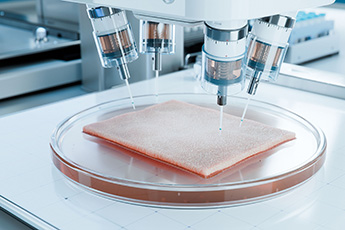In 1968, Mr. Propst invented the Action Office System, which became the office cubicle and provided "a social kind of privacy" for employees. The cubicle is likely to have a resurgence in 2020 as businesses start opening up after weeks of lockdown orders.
Some businesses and companies have already started reopening, but things will be different. There will be social distancing, and masks and temperature protocols in place. Since many of your customers have commercial real estate, we thought we would share some of the ways office design and practices could change due to COVID-19. Furthermore, you may find that these changes affect your branches and how your employees work too.
Controlled areas. There will still be a need to keep customers and employees six feet apart for some time. Seating areas will need to be regrouped to reflect this, with chairs removed or separated. Also, there will likely be various check-in stations in some businesses to appropriately control groups of people. Plexiglass has also become more common for distancing. It has already shown up at the grocery stores and restaurants that have remained open and it is likely many financial institutions will provide plexiglass at their teller stations as they open back up too.
Buffered workspaces. Just as social distancing affects foot traffic and front line areas, it affects workspace dimensions. Workspaces will either have much greater open spaces to allow for social distancing or they will be more enclosed and private, like cubicles, to keep germs from spreading as easily. Where possible, corridors will be widened and foot traffic will go in one direction.
Minimalist work stations. Perception is everything and it will be important to keep work stations neater than ever. Otherwise, it may be thought that germs are hiding in stacks of files and more easily transmittable. While financial institutions already need to keep areas neat and tidy for compliance purposes, other industries will need to follow suit to make their employees feel better about germ-control.
Visible housekeeping. While previously you rarely noticed that workspaces were cleaned, now it will be very apparent to ensure that everyone feels safe and comfortable at work. We expect multiple touchless sanitation stations as well to allow employees and customers to use hand sanitizers or grab a tissue.
Healthier facilities. While facilities already have protocols for air quality, humidity, filtration and ventilation, these measures will need to be transparent to all employees as they return to work. Also, we expect some businesses may even take after healthcare industry practices by using nano coatings on work surfaces for their anti-microbial, anti-viral and anti-fungal properties.
While no one has a crystal ball about the economic effects of these workplace changes, we wanted to keep you posted nonetheless. Then, when things settle in a bit more down the road, you will have a little more information when discussing business with your customers.




